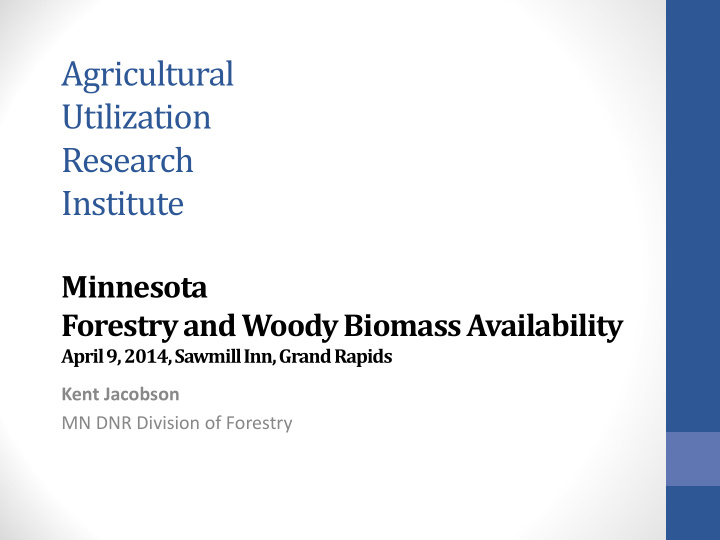



Agricultural Utilization Research Institute Minnesota Forestry and Woody Biomass Availability April 9, 2014, Sawmill Inn, Grand Rapids Kent Jacobson MN DNR Division of Forestry
FIA and MN Harvest Trends Harvests down 1.2 million cords 2
Increasing Total Inventory 3
Timber Supply 4
Supply Considerations (1) Location/Location/Location, Scope and Scale - OR What, Where and How Much? ____________________________________________________ 1. Greatest volume, quickest access, lowest cost, less risk…. • Biomass surplus in abundance – All Ownerships • Harvest residuals – 20%+ tops, limbs, below utilization standards • Mill residuals – bark, sawdust, etc. • Material quality is not all “roundwood – solid wood” 2. Variable volumes / species by location and market demand… • Public timber programs, existing capacity • Pulpwood and better standards • Unsold sales, variable by location, mix of species and quality 5 • Product by species – e.g. balsam, pine, basswood, more
Supply Considerations (2) 3. Opportunities for under utilized species/products • Tamarack, ash, mixed hardwood examples • Public land management plans, potential review • Location: dispersed or regionally condensed 4. Non-Industrial Private Forest (NIPF) Landowners • Greatest potential for increase timberland outputs • NIPF must participate to reach high level of statewide capacity • Professional forest management assistance (public, private, industry) • Property tax laws (SFIA, 2b and the 2015 legislature?) • Landowner management motives • Market values 6
Recommend
More recommend